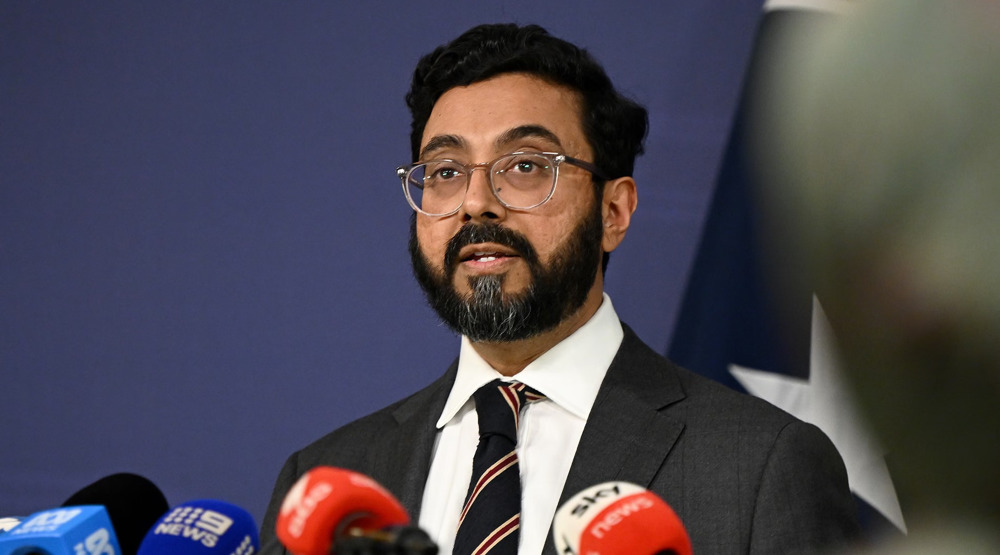Indonesia blames Boeing for recent deadly plane crash
Indonesian authorities investigating the recent crash of a passenger plane that killed 189 people on board have announced that the pilots of the Boeing 737 MAX had not been provided with adequate training by the aircraft manufacturer.
“We know, because this incident happened, we know we need additional training,” the head of Indonesia’s transportation safety committee of crash investigators (KNKT), Soerjanto Tjahjono, said in a press briefing on Monday.
Soerjanto emphasized that the aircraft’s flight manual lacked instructions on how to handle a situation like the one that occurred in the crash.
He said Indonesian regulators would tighten training requirements as a result of their findings during the probe so far.
A Boeing 737 MAX, operated by Indonesia’s Lion Air, crashed into the Java Sea shortly after take-off on October 29.
Moreover, Lion Air authorities announced on Monday that they had followed a training regime approved by both American and European regulators.

The October 29 crash was the first accident involving the 737 MAX, an updated version of Boeing’s workhorse narrow-body jet that entered service last year.
The remarks by Soerjanto shed new light on the areas under scrutiny as the investigators prepare to release their preliminary report by November 29, a month after the passenger plane crashed, killing all aboard.
Prior to the announcement, public attention was mainly focused on potential maintenance issues, including a faulty sensor for the “angle of attack,” a vital piece of data needed to help the aircraft fly at the right angle to the currents of air and prevent a stall.
Meanwhile, two US-based pilot unions confirmed that American pilots, too, were unaware of the potential risks that the Indonesian pilots faced during the ill-fated Lion Air flight since those risks were not explained in the aircraft’s flight manual, Reuters reported.
A 737 captain and spokesman for the Allied Pilots Association (APA) that represents American Airlines Group Inc. pilots, Dennis Tajer, declared that his union was informed after the crash about a new system Boeing had installed on 737 MAX jets, which could command the plane’s nose down in certain situations to prevent a stall.
“It is information that we were not privy to in training or in any other manuals or materials,” Tajer said.
The developments direct attention to the contents of Boeing’s aircraft manuals and a conversion course allowing pilots of the previous generation of the plane, the 737NG, to upgrade to the MAX.
The approved training was restricted to three hours of computer-based training and a familiarization flight, Lion Air Training Center general manager Dibyo Soesilo said during a media tour of the center on Monday.
The information recovered from the airliner’s flight data recorder last week also prompted the US-based Federal Aviation Administration (FAA) to issue an emergency airworthiness directive urging airlines to update their flight manuals.

The directive warned pilots that a computer on the Boeing 737 MAX could lead to the plane being forced to descend sharply for up to 10 seconds even in manual flight, leading to potential difficulties in controlling the plane.
Pilots could stop this automated response by pressing two buttons if the system behaved unexpectedly, but questions have been raised about how well-prepared they were for such an automatic reaction and how much time they had to respond.
An American Airlines spokesman said the carrier had received the FAA directive as well as a bulletin from Boeing on updating the flight crew operations manual.
Boeing refused to comment directly on its training program, merely noting that it was taking “every measure” to fully understand all aspects of the incident and working closely with investigators and all regulatory authorities involved.
The giant American plane manufacturer and military contractor had claimed last week that the fix for this type of event — known as a “runaway stabilizer” — was covered by existing procedures.
VIDEO | Press TV's news headlines
Trump floats ‘Dream Military’ fueled by record $1.5-trillion budget
Iran: US interventionism aimed at inciting violence, terrorism
VIDEO | Tunisian parties denounce Trump’s foreign policy as violation of intl. law
Trump’s immigration crackdown turns deadly; president says killer acted in ‘self-defense’
VIDEO | Trump renews highly aggressive rhetoric towards Iran
VIDEO | Transatlantic tensions: Greenland
VIDEO | Yemen’s Saudi-backed government expands control amid coalition strikes on separatists













 This makes it easy to access the Press TV website
This makes it easy to access the Press TV website